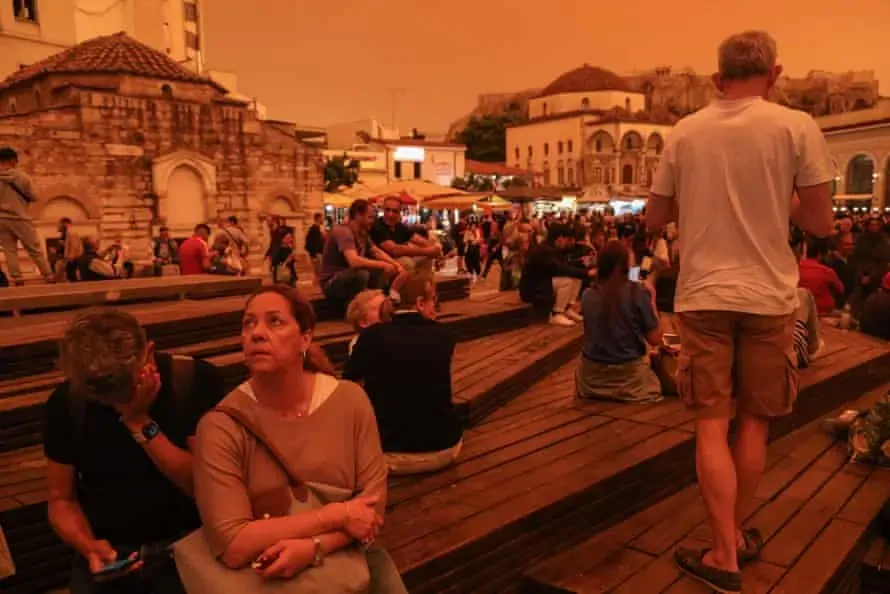This phenomenon, driven by days of strong winds blowing from the south, has significantly reduced visibility and prompted health warnings from authorities. The dust concentrations not only obscure sunlight but also bring an increased risk of fine pollution particles, particularly hazardous for individuals with underlying health issues.
Greece had already experienced similar dust clouds from the Sahara in late March and early April, with their effects felt as far away as Switzerland and southern France. The Sahara desert releases between 60 to 200 million tonnes of mineral dust annually, with particles ranging in size from large to small. While the larger particles settle relatively quickly, the smallest ones can travel vast distances, potentially affecting regions across Europe.
The Greek weather service has forecasted that the skies will gradually clear by Wednesday, offering relief from the hazy conditions. However, the strong southerly winds responsible for carrying the dust have also contributed to the outbreak of unseasonal wildfires in the country's southern regions. Over the past 24 hours, a total of 25 wildfires were reported across Greece, with the fire service swiftly responding to contain the blazes.
In one incident, three individuals were apprehended on suspicion of accidentally starting a scrub fire on the Aegean Sea resort island of Paros. Fortunately, no significant damage or injuries were reported, and the fire was quickly brought under control. Meanwhile, another wildfire near a naval base on Crete was successfully contained on Tuesday.
The combination of the Sahara dust storm and the wildfires underscores the challenges faced by authorities in managing environmental hazards and ensuring public safety. While natural events like these are not uncommon, their impact on air quality and the risk of wildfires highlight the need for proactive measures and public awareness.
Residents are advised to heed warnings from authorities and take precautions to minimize exposure to dust particles and pollutants. This includes staying indoors when possible, using air purifiers, and wearing masks if venturing outside. Additionally, individuals with respiratory conditions or other health concerns should consult healthcare professionals for guidance on managing potential risks.
Efforts to mitigate the effects of such events require collaboration at local, national, and international levels. Governments must invest in monitoring systems, early warning mechanisms, and sustainable land management practices to reduce the impact of dust storms and wildfires on communities and ecosystems.
As the skies gradually clear and the immediate threats subside, it is essential to reflect on the lessons learned and the importance of resilience in the face of natural disasters. By working together and prioritizing environmental stewardship, we can better adapt to the challenges posed by events like Sahara dust storms and wildfires, safeguarding the well-being of present and future generations.

